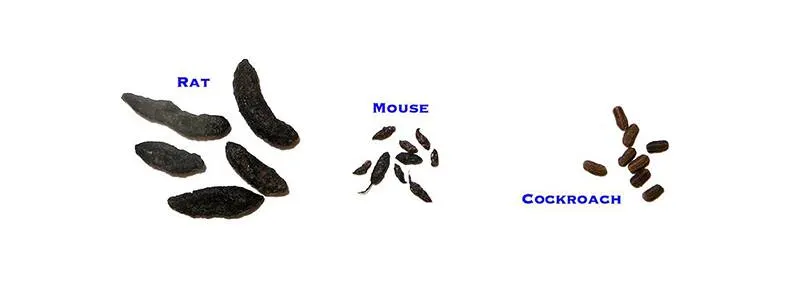
Pest Droppings: Rat Poop vs Mouse Poop
Discover What Rat Poop vs Mouse Poop Looks Like to Effectively Treat a Mouse or Rat Infestation
December 16th, 2023
Learn the difference between rat poop and mouse poop in this article. With correct identification and inspection, you will be able to get rid of rodent droppings and prevent future infestations in your home. Keep reading to discover the best rodent pest control tips.
How to Get Rid of Rat Poop & Mouse Poop Safely
If you plan on getting rid of rat or mouse poop yourself at home, then you need to know how to do this safely to avoid infection and ensure the rodents don’t come back. Another option is to hire a professional pest control service to inspect and treat the rodent infestation.
Either way, it is crucial that you get rid of droppings properly so these pesky rodents don’t cause more damage and come back to reproduce.
Protective Equipment
Protect yourself from coming in contact with the rodent’s biological or polluted matter. This poses a massive health risk to humans because their droppings harbor infectious airborne diseases.
You should wear rubber gloves that are thick, latex, or vinyl, a face mask, and some sort of eye protection. Do not wear any mesh or unprotective clothes, instead, opt for long shirts and pants that will cover any exposed skin.
Since you’ll be handling strong cleaning products, wear old clothes that you can handle being ruined.Use plastic bags to dispose of the droppings, and ensure they are closed tightly or tied off when you are done.
Stirring up Unwanted Particles
Do not vacuum, sweep, or brush the rodent droppings away. This will only stir up the dust and cause infectious airborne particles to travel and spread through your home.
Stick to one cleaning product instead of mixing multiple together. Toxic fumes are released when cleaning products are combined, and this can lead to respiratory issues, headaches, and possibly passing out.
Bleach
Instead of sweeping or vacuuming up mouse or rat droppings, try mixing 1 ½ cups of household bleach with 1 gallon of hot water together. This is an effective cleaning solution that you can make at home. Remember to wear clothes that you don’t mind getting stained.
Begin cleaning by spraying the solution over the affected areas and leaving it to soak in for 10-20 minutes. Use damp paper towels to remove all nest materials and droppings after the solution has soaked in. You can also choose to bleach the entire area using a mop. Do not leave this bleach solution for too long, as it is abrasive and will damage surfaces.Dispose of any cleaning towels in a plastic bag.
Remove all further traces
Any biological trace left behind by rat or mouse poop will transmit disease and attract new animals/rats. To ensure good rodent removal, you must remove every trace of it. This includes washing your hands, clothes, and all cleaning materials after you have removed the droppings.
If the mouse or rat poop has come in contact with bed linen, curtains, or carpets, then it’s crucial that these are washed at a high temperature with disinfectant at least once. Washing all materials that have come in contact with droppings twice is a surefire way to effectively remove all biological traces.
Tips for Safe Handling Of Mouse Poop & Rat Poop
-
When handling rodent feces, wear gloves and facemasks.
-
Prevent harmful particles from becoming airborne in the droppings. Vacuuming, sweeping, or any other method should not be used as it stirs up dust.
-
Try mixing 1 1/2 cups of bleach with 1 gallon of water. Spray onto the affected area and wipe away using a damp paper towel.
-
Bleach the area using a mop or a sponge.
-
Properly wash your hands and clothes.
Rodent Types and Pellet Droppings Characteristics
Although they may appear similar, rat and mouse droppings have slightly different characteristics.
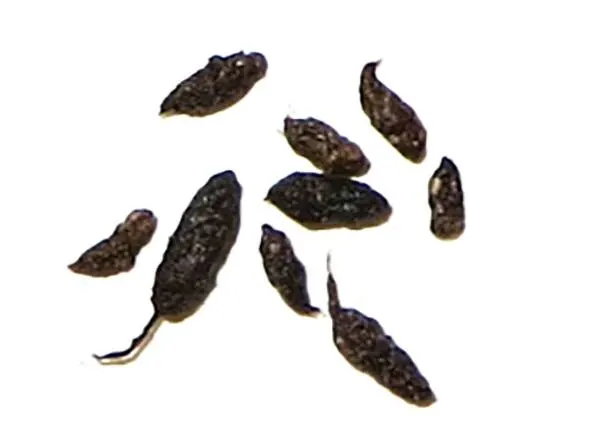
What does Mouse Poop look like?
Mouse droppings are small, pellet-shaped, dark brown in color, and pointy at the ends.
-
Qty: 40-100 pellets a day
-
Size: 1/4" long
-
Shape: Small, one or both ends pointed
Key Takeaway
Mouse feces are smaller than an uncooked grain of rice and are pointed at the ends. This often has them mistaken for insect droppings.
What does Rat Poop look like?
Rat feces are round, with pointed edges, and often appear in small clusters.
-
Qty: 40-50 pellets a day
-
Size: 1/2" long
-
Shape: Curved, oblong-shaped with pointed ends. They are scattered.
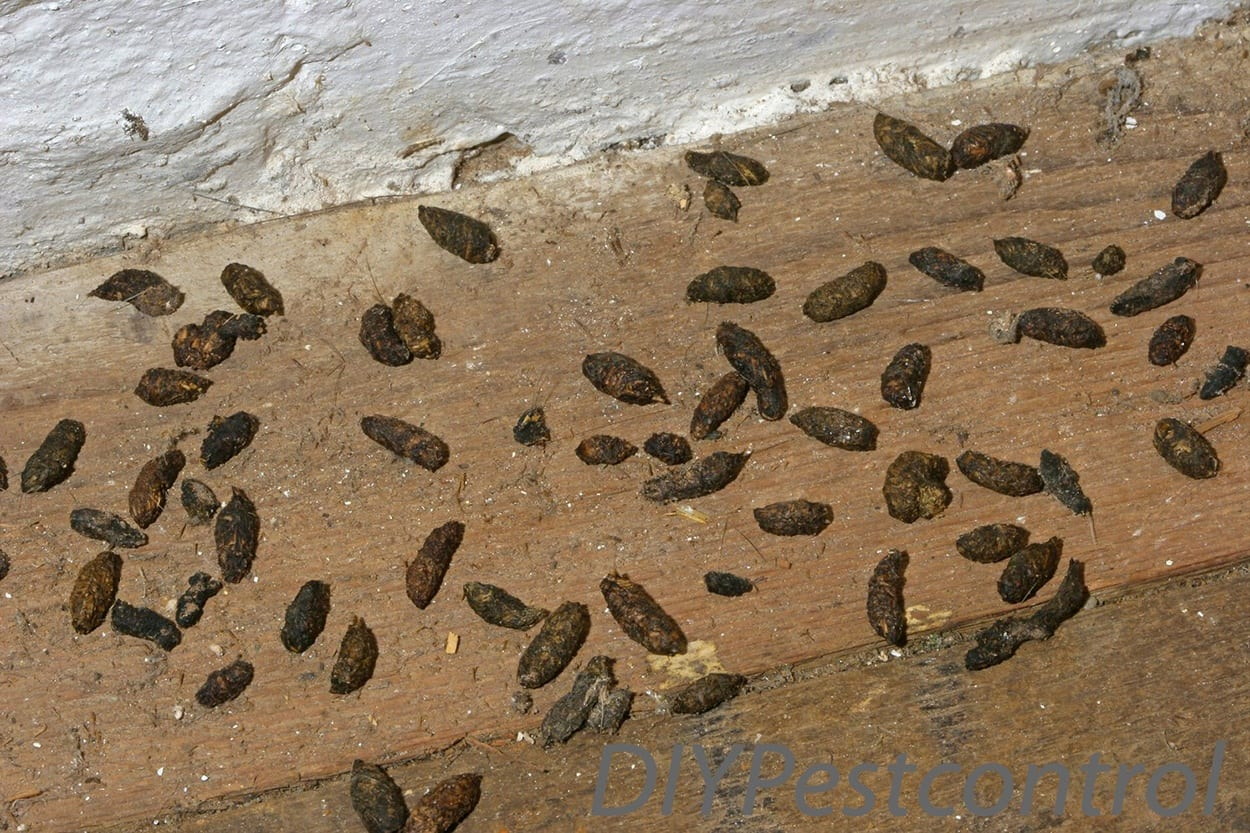
Do Rat Droppings Smell?
Rat droppings smell strong and musky, and the scent is often mixed with nearby rat urine. Rat urine has a foul ammonia-like scent that most people find instantly nauseating. The breakdown of nitrogen in the urine is what causes the ammonia scent.

Norway Rats (also known as Brown Rats)
-
Qty: 40-50 pellets a day
-
Size: 3/4" long
-
Shape: Rectangular, larger droppings with blunt ends. They are found in small groupings.
Key Takeaway
Rat droppings are larger than a cooked grain of rice with relatively blunt ends.
Rat Poop vs Mouse Poop
A mouse can produce anywhere from 40 to 100 droppings each day, while a rat produces between 40 to 50 droppings.
Identify Mouse Droppings
Mice droppings are usually small, measuring around 1/4 inch long. The color of the droppings will indicate how fresh they are. Older droppings will appear chalky and dry, whereas newer droppings will be darker and shinier.
Identify Rat Poop
Rat droppings are similar in shape but larger, ranging in length from 1/2 to 3/4 inches with blunt ends.
Rodent droppings are known to be harmful. Not only do they contaminate foods and cause allergic reactions in people, but they can also transmit bacteria and diseases.
The hantavirus is associated with mice droppings through inhalation. Diseases like these can have severe consequences for a pregnant woman and her unborn child.
The serious disease, rat bite fever, is also a form of typhus that can occur in dogs. It may be spread through urine and feces, but can also occur from bacteria in the saliva of a rat if an individual is bitten.
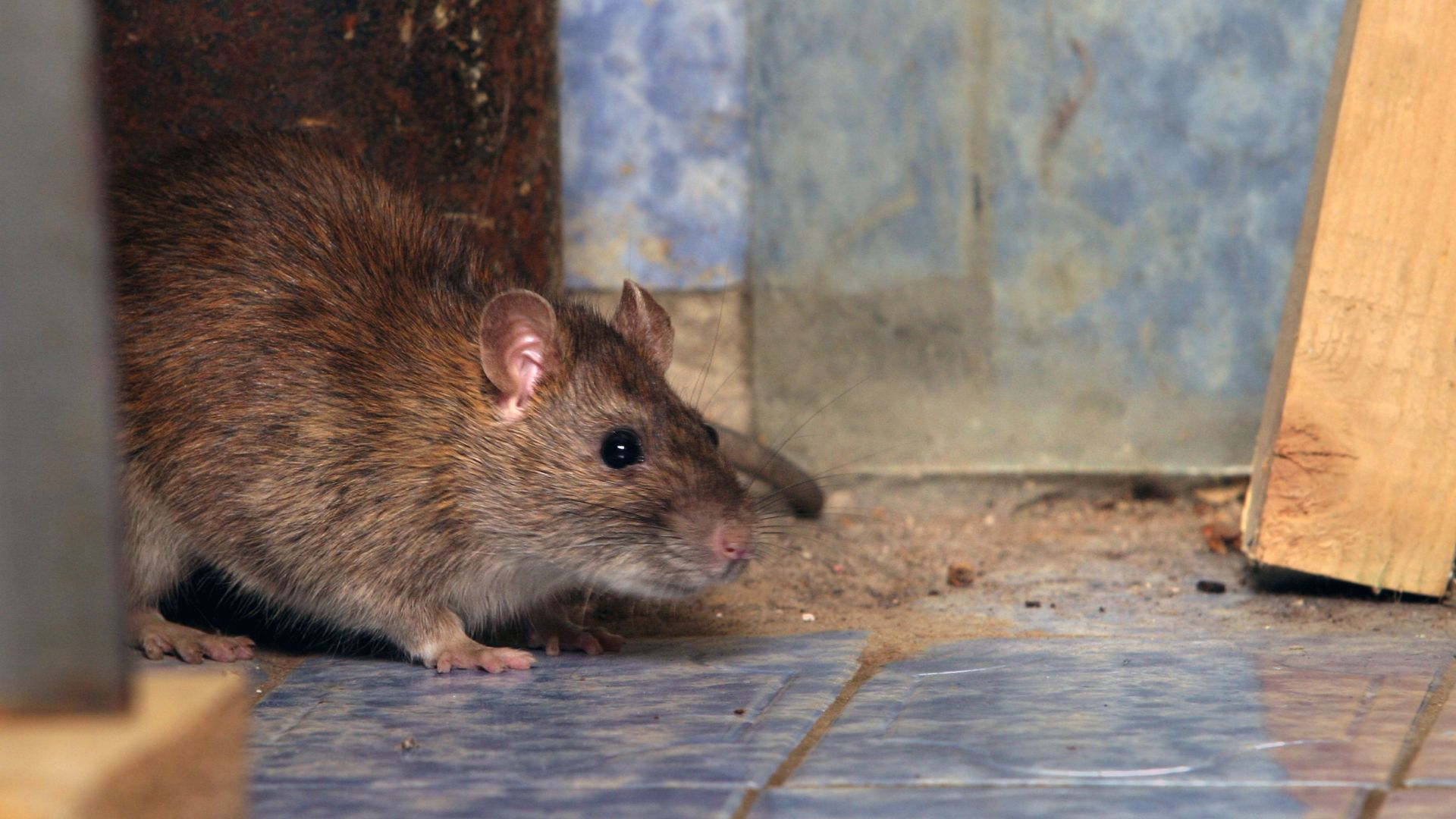
Fresh rat droppings differ from older rat poop in that it is moist and soft to the touch vs. gray and dusty-looking.
See the safety tips above for the removal of rodent droppings.
Inspection for Mouse Droppings and Rat Droppings
Rodents are attracted to our homes because of the protection and shelter they provide. There are particular places that mice and rats will head to in your home. Dining rooms provide food, faulty pipes, and other water sources to satisfy their thirst for moisture. Rodents are more likely to enter a home as the weather becomes colder and they seek protection from the outdoors.
If you’ve discovered droppings in or around your home, chances are you have a mouse or rat infestation. Knowing where to look and what to look for is your best line of defense in treating the issue.
When inspecting for mouse droppings and rat droppings, we recommend you wear protective equipment such as gloves and a face mask. This will protect you from any airborne diseases that these rodent droppings carry.
Top Tips for Rat Poop vs Mouse Poop Inspection
Check your pantry for Mouse Droppings
A pantry is the ultimate food source for families of rats and mice. Inspect any food packets or pet food bags to see if the edges have been opened or gnawed. Look for any rat or mouse droppings in and around food packages, dried plant matter, and in cupboards or containers.
If any items have been chewed upon, this is a tell-tale sign of a rodent infestation in your home. Inspect the surrounding pantry areas for rat droppings and mouse droppings to confirm your suspicions.
Inspect all Windows, Doorframes, and Walls
Check for any areas of damage in your home. Chances are there will be rat or mouse droppings left behind. Mice enter your home by chewing through windows, door frames, baseboards, cupboards, and walls.
Look to see if there are any small tooth marks or little wood chips left in the area. A mouse infestation can cause electrical troubles in a house. This is a potentially dangerous issue that should be addressed promptly, so if any droppings have been discovered, it is wise to act fast.
Look for Rat or Mouse Droppings at Nightime
If you are finding scattered droppings throughout your house, try looking for them at night when the house is quiet. Because these pests are small, they are often heard scratching or gnawing in the attic or inside walls. Try following these sounds to discover any fresh trails of droppings.
Not only will this help you identify the fresh rat poop vs mouse poop correctly, but it will also reveal where the rodents are hiding.
When inspecting for rodent droppings, do not confuse the smaller mice droppings with roach excrement.
-
Cockroach droppings are smaller and more slender than mice droppings and have a distinct ridge along the edges.
-
The larger American roach dropping is blunt on end.
-
Squirrel droppings are similar to rat droppings but have a twist at the midpoint of the dropping.
How to Prevent Mouse Droppings and Rat Poop
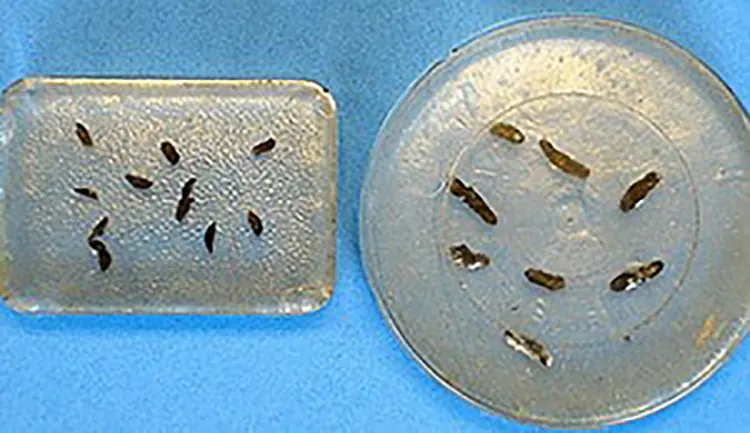
The key to preventing rat and mouse droppings in your home is simply good hygiene and eliminating any areas that rodents love to travel through. Whether you know the difference between rat poop vs mouse poop or not, you can prevent droppings from appearing in and around your home with the following tips:
-
Make sure any household waste is placed into sealable garbage bags and disposed of in a tightly-covered garbage can. This will help repel rodents and cut off any potential food sources.
-
Clean surfaces, drawers, cupboards, windowsills, and doorways regularly using powerful, biological enzyme cleaners. This will remove any pheromones found in the rodent urine that they use to communicate with each other. If left untreated, it will attract rodents inside your home.
-
Remove any food or water sources from your yard. Move woodpiles away from your house. Clear all dense vegetation in the area around a house’s foundation.
-
Inspect your house’s foundation, roof, and garage doors for gaps. If there are gaps larger than half an inch, seal them.
-
Inspect behind furniture, inside cabinets, and around your pantry every few weeks for droppings. Now that you know the difference between rat poop vs mouse poop, you will have a keen eye for any symptoms of a possible infestation.
If you have a large number of rats, contact a pest control professional who can help you manage your problem more efficiently than you could on your own. It all comes down to basic housekeeping and hygiene.
More About Mice
More About Rats
Rat vs Mouse Droppings
Learn the difference between rat and droppings.
When inspecting for rodent droppings, do not confuse the smaller mice dropping with roach excrement.
- Cockroach droppings are smaller and more slender than mice droppings and have a distinct ridge along the edges.
- The larger American roach dropping is blunt on end.
- Squirrel droppings are similar to rat droppings but have a twist at the midpoint of the dropping.
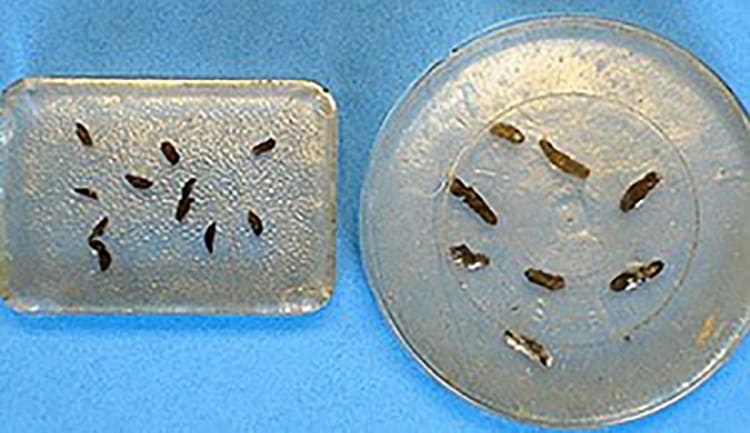
The droppings on the left are from mice; the ones to the right are from roof rats or squirrels.
Rodent droppings are known to be harmful. Not only do they contaminate foods and cause allergic reactions in people, but they can also transmit bacteria and diseases. The hantavirus is associated with mice droppings through inhalation.
See the safety tips below for inspection and removal of rodent droppings.
Key Takeaway
Rat droppings are larger than a cooked grain of rice with relatively blunt ends.
Tips for Safe Handling Of Rodent Droppings
- Use gloves and facemasks when handling rodent feces.
- Prevent hazardous particles in the droppings from becoming airborne. Do not stir up dust by vacuuming, sweeping, or any other means.
- Mix 1½ cups of household bleach in 1 gallon of water. Once everything is soaked for 10-30 minutes, remove all of the nest material, mice or droppings with damp paper or disposable towels.
- Mop or sponge the area with bleach solution.
- Wash hands and clothes thoroughly afterward.
Rodent Types and Pellet Droppings Characteristics
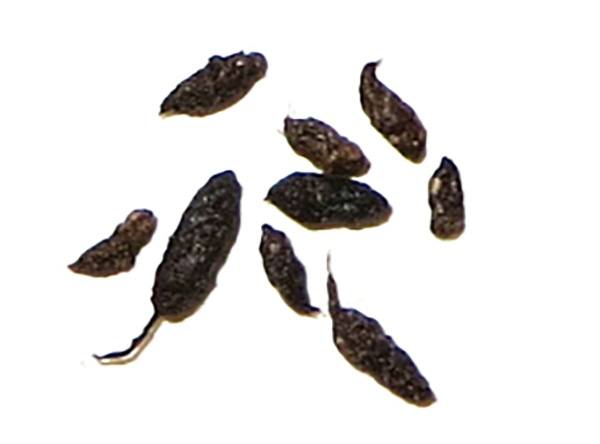
Qty: 50-75 pellets a day
Size: 1/4" long
Shape: Small, one or both ends pointed
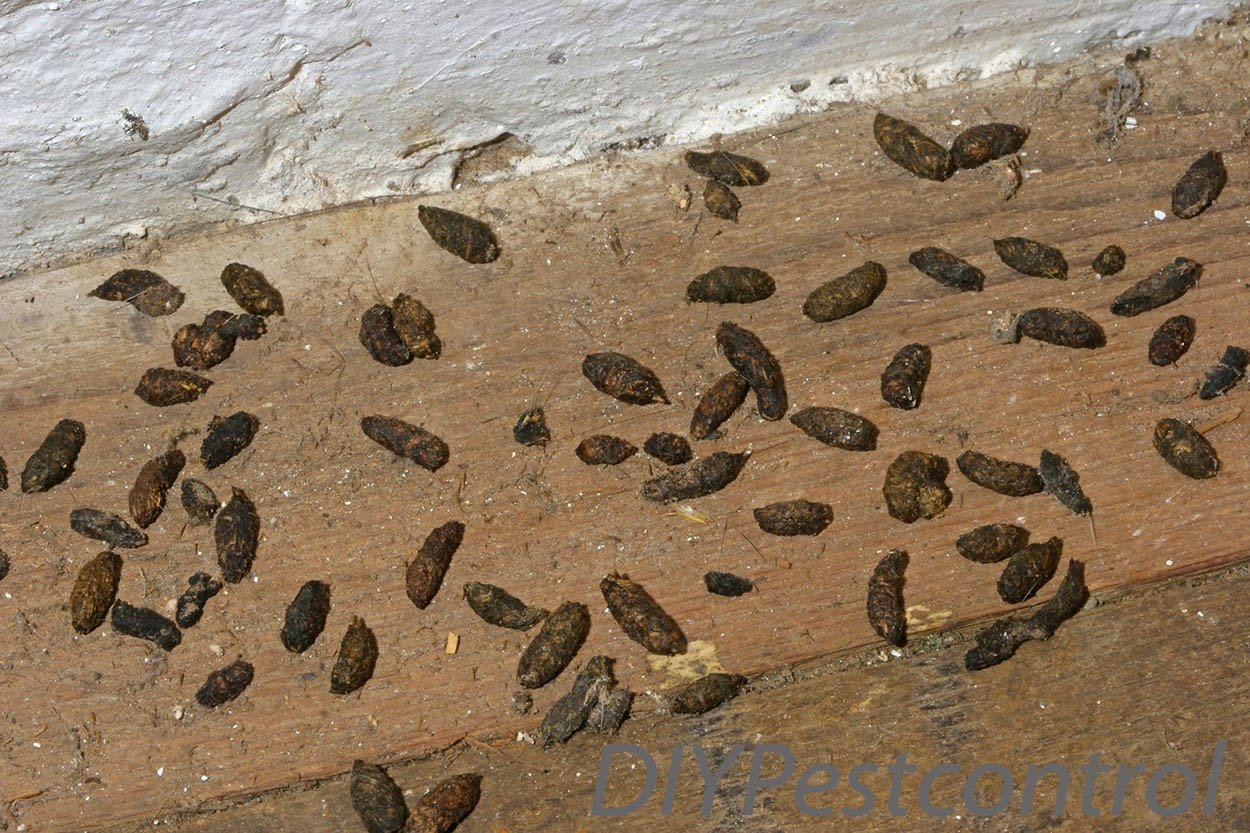
Qty: 40-50 pellets a day
Size: 1/2" long
Shape: Curved, oblong shaped with pointed ends. They are scattered.
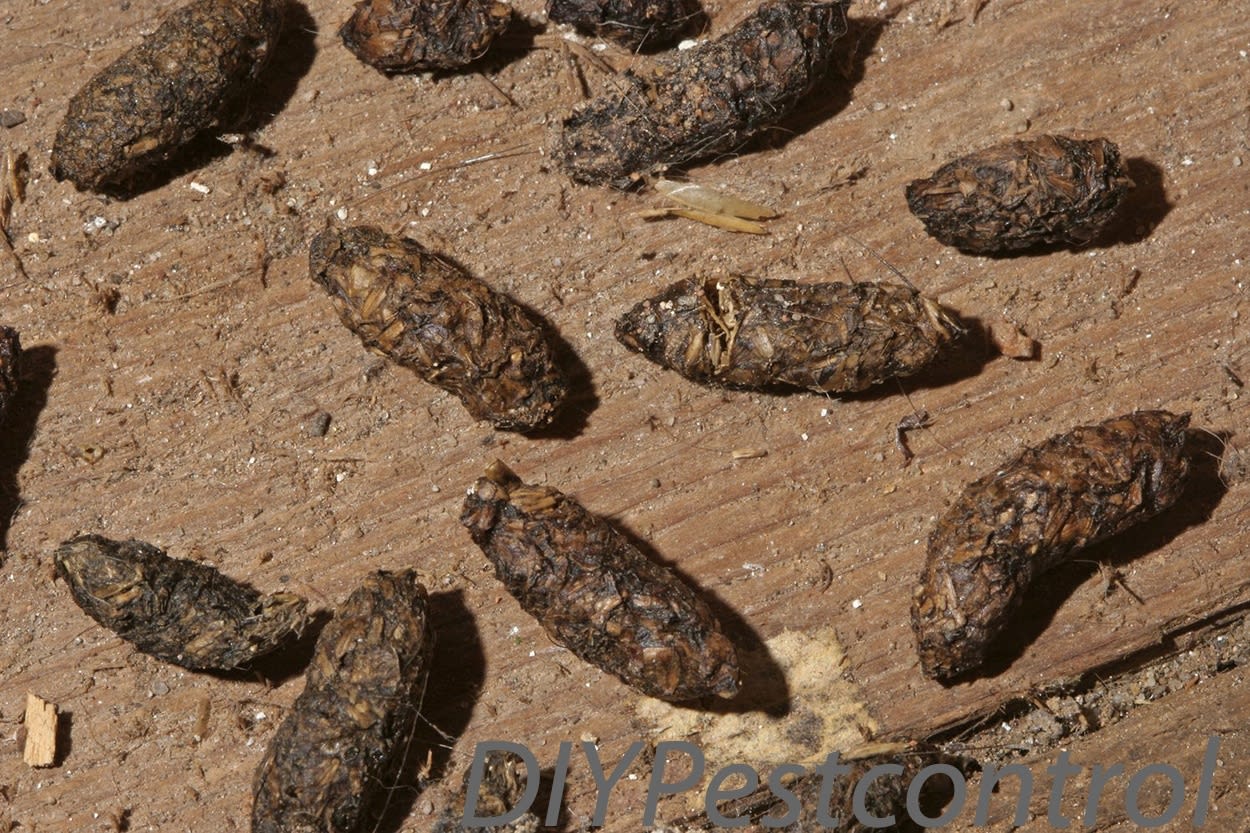
Qty: 40-50 pellets a day
Size: 3/4" long
Shape: Rectangular, larger with blunt ends. They are found in small groupings.
Key Takeaway
Mice droppings are smaller than an uncooked grain of rice and pointed at the ends. This often has them mistaken for insect droppings.
Written by our resident pest control expert Ken Martin.




